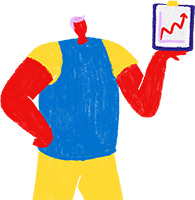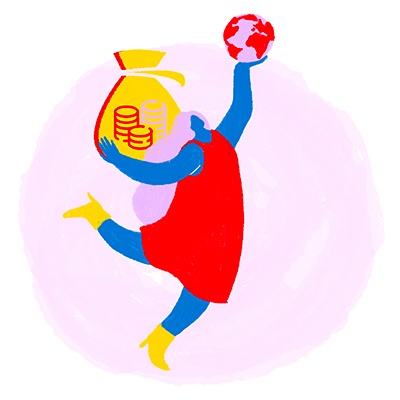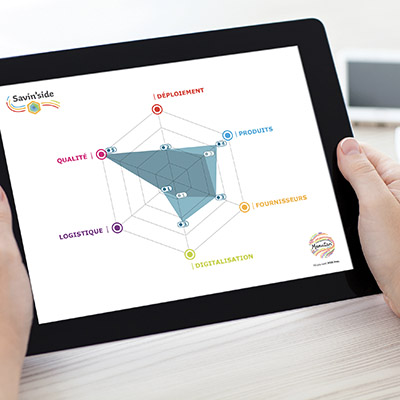In today's economic climate, marked by rising costs and fierce competition, businesses must master the cost price of their goods and services if they want to make profits. This involves calculating all expenditures to manage costs and leverage the right cost-saving measures without compromising quality.
Cost price: Definition
Cost price, also known as unit cost or production cost, refers to the amount of money spent by a company to produce a product or a service for the market. In other words, it's the total cost of all direct and indirect charges to produce one unit.
Emmanuel Hachez, an expert on the subject, explains in his book: "Business leaders regularly face important questions involving cost prices. These questions concern various aspects of management, and even strategy of their company. They can be perceived as immediate, for example, to set the selling price or submit an offer, or more distant, for example, maintaining or developing a product line."
If a company sells its goods at cost price with no profit margin, it recovers its investment but makes no profit. Every business must calculate its unit cost price to determine its selling price, incorporating its gross margin and value-added tax (VAT). Cost price serves as an indicator to avoid selling goods or services at too low a price. It also allows a company to define its break-even point, i.e., the minimum turnover required to cover all charges.
Calculating the cost price is therefore an essential step in the life of any business to ensure the profitability of its product and service offering. It allows for a comprehensive evaluation of the economic performance of each unit.
The components of cost price
To calculate the cost price, it's necessary to list all the charges that contribute to the production of said product or service, whether directly or indirectly. This involves a thorough and meticulous inventory within the company.
Direct charges
Direct charges refer to all company expenditures directly linked to the manufacture of a product or the provision of a service.
This mainly covers:
- Purchase of raw materials and supplies;
- Energy expenditures (electricity, gas, fuel...);
- Employee salaries;
- Delivery costs...
Indirect charges
Indirect charges include all expenditures not directly related to the production of a product or service. Because they are spread throughout the company, it's more challenging to identify and quantify these overhead costs.
This includes, for example:
- Rent for company premises;
- Expenditures to promote the product or service;
- Salaries of other employees (human resources, accounting, after-sales...);
- Administrative management costs...
How to calculate a cost price?
To calculate the cost price of a product or service, add direct and indirect charges, then divide by the number of units produced or services rendered.
However, calculating the cost price isn't always so simple in practice. The exercise becomes more complex when a company simultaneously sells several product categories or when dealing with seasonal production, for example.
Therefore, it's necessary to consider the best way to allocate and attribute common charges, as well as indirect charges. That's why more advanced calculation methods exist. We can cite, for example, the full costing method or the ABC method.
The full costing method
This is a traditional method of analytical accounting. It involves associating indirect charges with main and auxiliary analysis centres: Procurement, production, distribution, administration, after-sales service... The next step is to determine the share of these analysis centres attributable to each product or service, based on work units. For example, you can choose the square metre as a work unit to allocate rent.
The ABC method
The ABC (Activity-Based Costing) method is a variant of the previous method. However, it centres its analysis on cost prices by activity rather than by product. The principle is that products consume activities, which in turn consume resources. This involves breaking down your organisation by activities, processes, and tasks. At the end of the process, the company obtains a global picture of its own functioning.
How to optimise the cost price?
Once a company has calculated the cost price of its products or services, the challenge is to optimise profits in line with its strategic orientations. For example, you can focus on increasing sales, increasing your profit margin, or reducing your costs, whether direct or indirect.
In the latter case, procurement departments play a key role. To reduce direct costs, procurement teams can, for example, negotiate better contractual conditions with their suppliers, such as volume discounts. They can also challenge the market and source materials, products, or services that offer better value for money.
Buyers also have room for manoeuvre on indirect costs. They can work on rationalising suppliers to reduce their management costs, as well as transactional costs. They can also manage the quality of supplier processes by monitoring their service rate. This involves tracking waste during order placement, transport, reception, invoicing... All this with the aim of reducing costs and improving overall performance.
Much more than a simple aggregation of expenditures, cost price is therefore an essential element of any company's financial management. This notion plays a key role in cost control, strategic decision-making, and overall profitability assessment. It's a lever available to every company to ensure sustainable growth.









